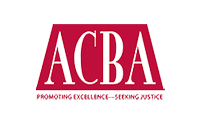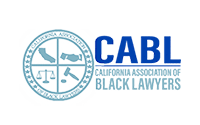When you file the lawsuit, you are the plaintiff. When you are the one being sued, you are known as the defendant.
Unlike a criminal case, which is brought against a party by the government to correct a wrong that the accused has allegedly committed against society, in a civil case, the parties are seeking monetary compensation.
While no two cases are identical, each civil case begins the same way with the filing of a lawsuit.
A lawsuit begins with the filing of a complaint. In civil practice, in those states having a Code of Civil Procedure, the complaint is the first or initiatory pleading on the part of the plaintiff in a civil action.
The court will then issue a summons, and the next step is to serve the lawsuit (complaint and summons) on the defendant.
The next step requires the defendant to respond, which is required 30 days after the complaint is served. The defendant may respond to the complaint in one of five ways:
- Motion to quash – argues that service was improper
- Demurrer – argues that the complaint on its face is defective and does not state a cause of action
- Motion to strike – argues that specific words in the complaint are improper and must be removed from the complaint
- File an answer
- File a cross-complaint
If the defendant files a challenge described at 1-3, the court will set a hearing date. If the court decides that the defendant is correct, it will usually allow the plaintiff to amend the complaint and give the defendant another opportunity to file a response or challenge the amendment.
Once all of the challenges are decided, the complaint will need to be answered.
If the defendant foregoes its opportunity to file a change to the complaint and instead files an answer, the case is considered at issue and the parties will start discovery.
If the defendant files a cross-complaint, the plaintiff will have the same options available to the defendant, which is to file a challenge or an answer, usually within thirty days.
Once discovery starts, here’s what you can expect:
What is Discovery?
In a general sense, discovery is the ascertainment of that which was previously unknown; the disclosure or coming to light of what was previously hidden; the acquisition of notice or knowledge of given acts or facts; as, in regard to the “discovery” of fraud affecting the running of the statute of limitations, or the granting of a new trial for newly “discovered” evidence.
“Discovery” procedures are used to “ascertain these facts.”
Here are the discovery tools available to both sides:
- Interrogatories: written questions, which must be answered under oath.
- Request for Production of Documents: these requests ask the other party to search for and produce documents relevant to the parties involved.
- Requests for Admission: these are specific questions that ask the other party to “admit” or “deny” facts that relate to the allegations in the complaint.
- Deposition: a deposition is an out-of-court interview under oath in front of a court reporter. The answers provided have the same force and effect as if they were said in court. Unlike interrogatories, requests for production, and requests for admissions, depositions may be taken of third parties who are not named in the lawsuit.
- Subpoena Duces Tecum: this is a document that the court issues to an attorney. It requires the recipient to submit documents and evidence in response or risk punishment from the court.
Motion Practice
If the parties have a dispute over discovery compliance, they should try to work their differences out informally. However, in the event a compromise is impossible, either side may file a motion to request the court to intervene and decide the issues in dispute. Typical outcomes include the court ordering the offending party to comply with discovery requests, such as producing additional documents or answers under oath. In some cases, the court may sanction the offending party and make him or her pay money as a punishment for non-compliance.
However, monetary sanctions are but one form of punishment; in more egregious cases, the court may remove issues from the case and dismiss it.
Trial Setting & Mediation
While the case is pending, the court will hold a series of scheduling hearings called case management conferences. During the conferences, the court will set important dates including trial mediation deadlines and the date that discovery will close.
Settlement
The parties will have an opportunity to negotiate a settlement before trial either informally or through a method of alternative dispute resolution.
Trial
Trial by judge is called a bench trial. Trial by jury is what most people picture when they think about court. This is where twelve members of the community come to court and decide the case for the parties based on the evidence and argument. At the conclusion of trial, the verdict will be read. And the loser may move for a new trial or file an appeal, among other things.









